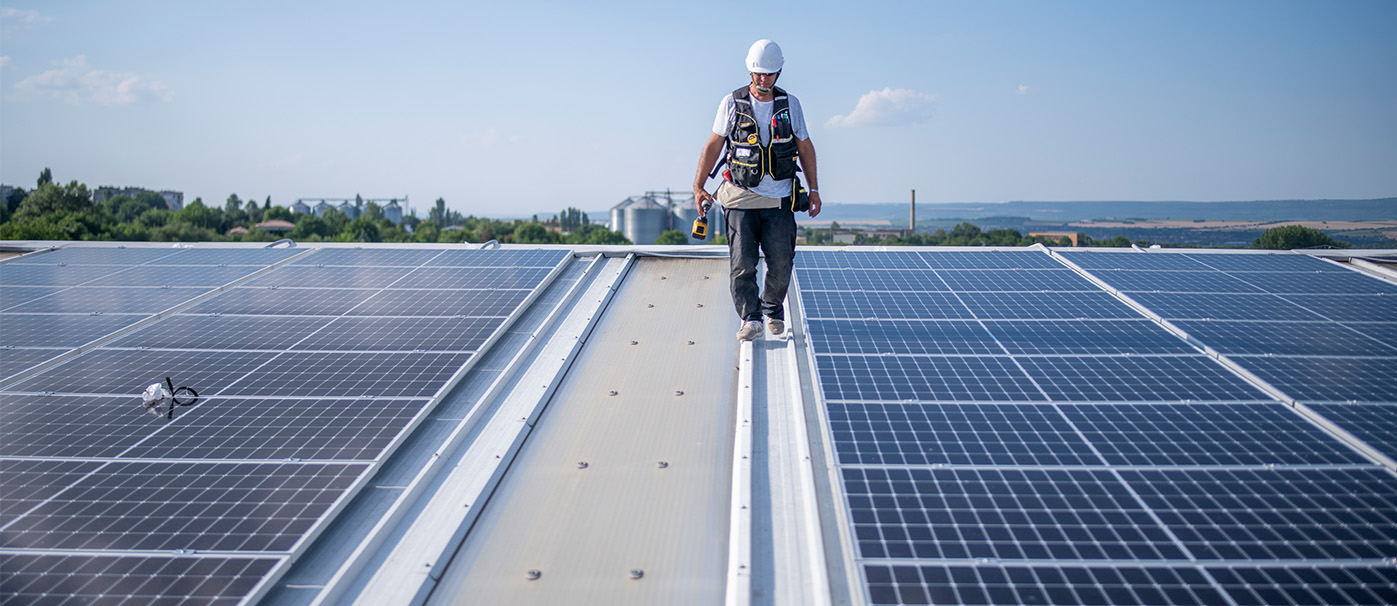Staying Safe From Falling When Working At Heights
Working at heights is a high-risk activity and a leading cause of death and serious injury. Steven Chadwick of Master Electricians Australia discusses how to avoid becoming part of the statistics.
Working at heights is a leading cause of death and serious injury in Australia. Falls from ladders have resulted in a significant number of serious and even fatal injuries, even when working at low heights. Between 2015 and 2019, falls from a height accounted for 13 percent of worker fatalities (122 fatalities). The construction industry accounted for 40 per cent of fall-related fatalities. Here are Steven Chadwick of Master Electricians Australia’s tips on how you can manage the risks safely.
Managing risk while working at heights
A PCBU (person conducting business or undertaking), or employer, has specific obligations under legislation to manage the risk, as far as is reasonably practicable, of someone falling from one level to another. This includes requirements to:
• Ensure any work involving the risk of a fall is carried out on the ground or on a solid construction.
• Provide safe means to access and exit a workplace.
• Minimise the risk of falls by providing a fall prevention device, work positioning system or a fall arrest system.
How to minimise the risk of falls
Prior to working at heights and using a ladder, consider the most effective way to protect workers from the risk of falling and, where possible, eliminate the need to work at heights altogether. If this cannot be eliminated, look at other preventative measures including edge protection and installing a fall-prevention device. This includes any equipment that is designed to prevent a fall when someone is temporarily working at heights, which once in place doesn’t need any further adjustment by workers using it, for example guard rails or barriers. Installing fall prevention systems should be considered at the design and planning stage.
Examples include:
• roof safety mesh
• guard railing/barriers
• scaffolding
• elevating work platforms.
Work procedures should be developed on how to correctly install, use, and maintain the system.
Training and supervision to prevent falls
The WHS Act requires PCBUs to ensure, so far as is reasonably practicable, the provision of any information, instruction, training, or supervision necessary to protect all persons from risks to their health and safety arising from work carried out as part of the conduct of that business or undertaking.
The PCBU must ensure that information, training, or instruction provided to a worker is suitable and adequate having regard to:
• the nature of the work carried out by the worker
• the nature of the risks associated with the work at the time of the information, training, and instruction, and
• the control measures implemented.
The PCBU must also ensure, so far as is reasonably practicable, that the information, training, and instruction are provided in a way that is readily understandable for the person to whom it is provided.
Workers must be trained and have the appropriate skills to carry out a particular task safely. Training should be provided to workers by a competent person.
Information, training, instruction provided to workers exposed to potential falls from working at any height should include:
• The proper use, wearing, storage and maintenance of PPE.
• The hazards and risks associated with work performed at these heights.
• How to follow health and safety procedures associated with this work, including the contents of any SWMS.
• The reasons fall protection measures have been put in place and how to use them properly.
• Procedures for emergency and rescue.
• Procedures for reporting fall hazards and incidents.
• The correct selection, fitting, use, care, inspection, maintenance and storage of fall arrest and restraint equipment, if this equipment is to be used.
• The correct use of tools and equipment used in the work, for example using a tool belt instead of carrying tools.
• Control measures for other potential hazards, for example electrical hazards and crushing or entanglement from the use of plant like elevating work platforms (EWPs).
“Workers exposed to a risk of a fall should also be adequately supervised by a competent person, especially if they are undergoing training.”
Emergency procedures for falls
Whenever there are risks from working at height, emergency procedures must be established, and first aid equipment provided.
Typical injuries from falls can include:
• Unconsciousness
• Blocked airways
• Impalement
• Serious head injuries
• Abdominal injuries
• Fractures
A person using a fall arrest system could also suffer suspension intolerance because of being suspended in a harness after a fall.
A PCBU who provides a fall arrest system as a measure to control risk must establish emergency and rescue procedures. The procedures must be tested so that they are effective. Workers must be provided with suitable and adequate information, instruction, and training in relation to the emergency procedures.
You must ensure that workers have access to first aid equipment and facilities for the administration of first aid. You must also ensure that workers are trained to administer first aid or that workers have access to people who are trained in first aid.
The emergency procedures for falls should be incorporated into the emergency plan required for the workplace under the WHS Regulations.
Further information on the selection, safe use and care of portable ladders is set out in AS/NZS 1892: Portable ladders series of standards. The ladder manufacturer’s recommendations on safe use should also be followed.





Comments (0)
Write a Comment